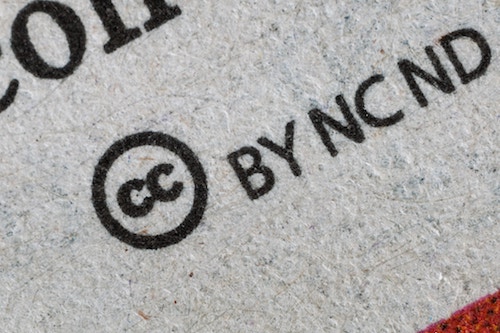Journalists are constantly rushing to wherever the action is happening. But even if they get to a location 10 minutes after something happened, they’re already too late if they wanted photos of it actually happening. And that’s why journalists around the world are increasingly relying on eyewitness photos published on social media accounts.
Journalists can filter Instagram photos by hashtags and location to pinpoint the exact photo they want for their article. They can do the same on Twitter on Facebook. In fact, on Twitter, journalists can even enter the latitude and longitude of a location and enter a radius of 20 miles to see all public tweets from within 20 miles of a certain location.
But can these photos be used without permission?
Copyright law is a complex topic but its essential for journalists to master so they don’t get themselves or their company into trouble. And also so they can quickly assess which photos they can and can’t use for their articles.
The following guide is based on an in-depth handbook to working with social sources that was published by First Draft.
The right way for journalists to use photos from Twitter, Instagram and Facebook
The first thing to remember is that as soon as a picture or video is taken, it’s considered copyrighted. This even applies to a live stream.
With that in mind, anytime you want to use a screenshot of someone’s photo, you need to ask them for their permission — even if that person has their profile set to “public,” not “private.”
The second thing to remember is that the copyright is held by the person who took the photo, not by whoever posted it. So make sure you’re asking the right person for their permission.
To ask permission, you can simply reply to their tweet. However, if lots of journalists are seeking the same picture, then your request may be lost. You also lose the opportunity to ask them additional questions, such as what they saw, if they were the one to actually take the photo, and whether they want photo credit.
That’s why it’s best to reach out in a more direct way via the DM function on the social media site or by email if you can find it. Email is extra helpful because you’ll have a written approval that can’t be deleted.
Emailing or direct messaging is also beneficial because you can ask them if they have any additional photos or videos they can share with you. That’s something other news outlets won’t have that could set your piece apart.
Should journalists pay a social media user for their content?
When a regular citizen sees that their photo is being sought after by a legitimate news site, they may want to take advantage of the situation by asking for a fee. This is within their right as the holder of the copyright to their image.
If you don’t reach out quickly enough, the eyewitness may have even been contacted by a licensing company that partners with individuals to get them the best fee for usage of their picture or footage.
It’s important to note that you may need to reason with the picture taker. They might think their picture is worth more than it really is, especially if it’s already been published on a social media site, if other eyewitnesses took similar pictures, or if other news organizations have already published the image.
A good tip is to have your news organization create a guide to getting paid for photos so you can send the link if someone asks for compensation. This will save you both time and ensure that you’re giving them the correct information so everyone is clear on the deal.
The one exception: embedding photos
One way journalists frequently get around asking for permission to use a social media photo is by embedding it into their article. This is perfectly legal. That’s because embedding a photo into an article means it appears exactly as it appears on the social media site so you’re not making it seem as though the photo is yours.
Just because you can, doesn’t always mean that you should
Yes, you can embed images from public social media accounts. However, whether you should is a bigger ethical discussion and is dependent on the specific situation. It’s easy for big news organizations to take advantage of a naive social media user who put up a photo not thinking it would draw attention from anyone besides their small following.
This means it’s best if you remain flexible in your use of photos. For example, if someone doesn’t want you to embed their photo and you find a similar photo from a different eyewitness who doesn’t mind if you use their photo, then you should probably use the second option.
It’s also important to remember that embedding a picture allows all your readers to click on it and see the profile of whoever took the photo. Depending on the picture, this can lead to harassment.
That’s why the most important thing to take away from this lesson is that it’s always best to DM the photo taker, no matter the situation. You can ask if and how they’d like to be credited. You can gain more insight into whatever happened from an eyewitness. You can check on them to ensure they’re okay if they witnessed a traumatic event. And, you can ask for additional photos.
So when in doubt, reach out.










